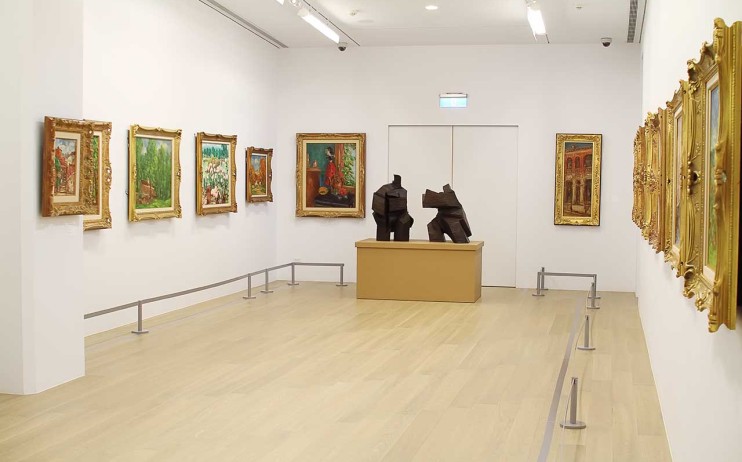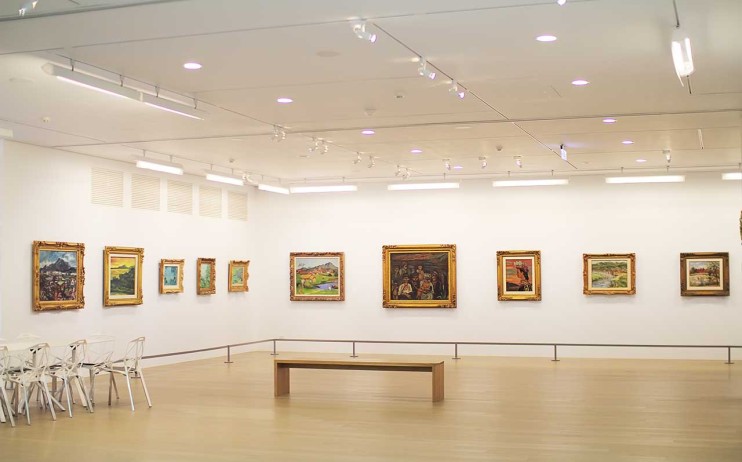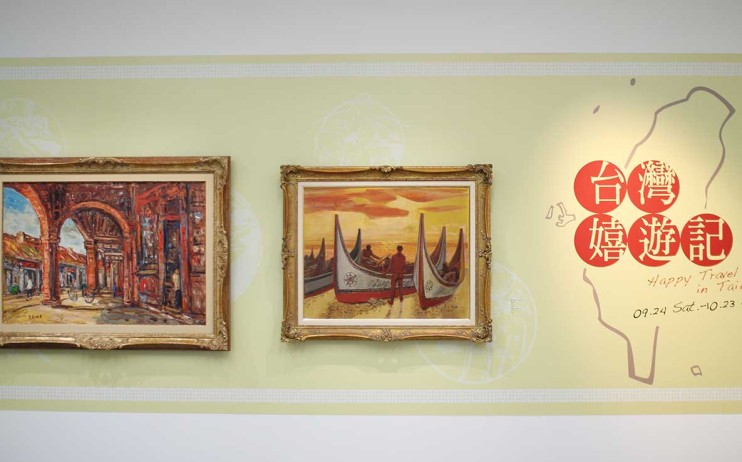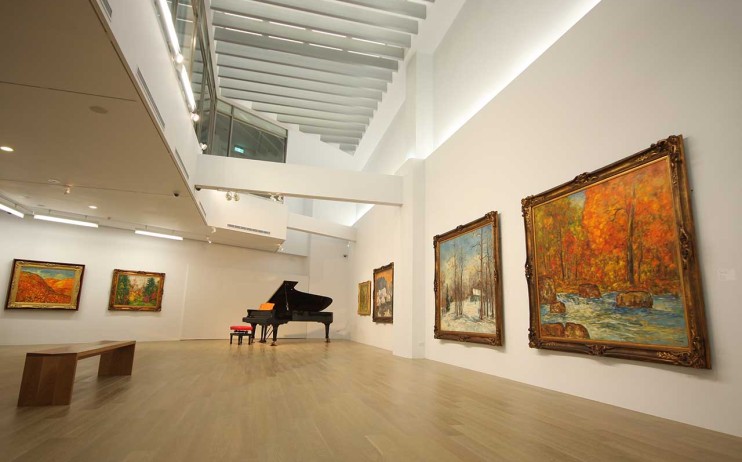Happy Travel in Taiwan
- 九月 24, 2011
- Exhibitions
- Duration: 2011/09/24-10/23
- Exhibited artists: Chen Cheng-po, Liao Chi-Chun, Li Mei-Shu, Lan Yin-Ding, Yen Shui-Long, Yang San-Lang, Lee Shih-Chiao, Chang Wan-Chuan, Liu Chih-Hsiang, Chen Te-Wang, Hong Rui-Lin, Liao Te-Cheng
Before 1895, Taiwan’s culture was still a closed, chaotic realm. At that time, art existed solely for religious purposes. Paintings and sculptures could only be seen richly ornamenting temples and the insides of their halls, and depicted religious figures. With the modernization movement of the Japanese Colonial Period, the concept of fine art was introduced to Taiwan for the first time. Soon, the idea of “art for art’s sake" sprouted in the hearts of people with an innate talent for art, and they began searching for the independence of a visual aesthetic value.
Drawing upon the aesthetic visions of twelve renowned Taiwanese painters, including Chen Cheng-po, Liao Chi-Chun, Li Mei-Shu, Lan Yin-Ding, Yen Shui-Long, Yang San-Lang, Lee Shih-Chiao, Chang Wan-Chuan, Liu Chih-Hsiang, Chen Te-Wang, Hong Rui-Lin, and Liao Te-Cheng, their idea of home is re-envisioned to gain a new understanding. It not only conveys the endemic beauty of old, rural scenery, but also captures and records the process of modernization occurring in Taiwan at that time.




